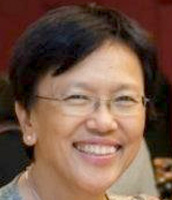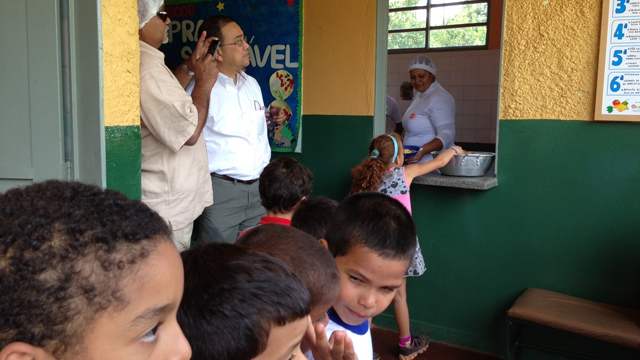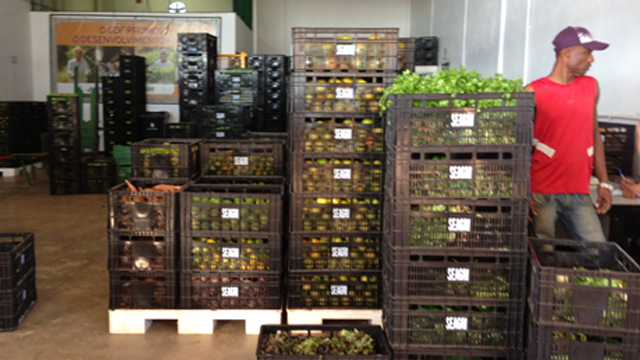SUMMARY
This is AI generated summarization, which may have errors. For context, always refer to the full article.
 Brazilians, hundreds of thousands, recently took to the streets in Sao Paolo, Rio de Janeiro, and Brasilia to protest against the increase in transport prices, corruption, and poor health and education services. This was triggered by what Brazilians perceive as the misplaced priorities of the government— spending on the upcoming World Cup in 2014 and the Summer Olympics in 2016 instead of on social services.
Brazilians, hundreds of thousands, recently took to the streets in Sao Paolo, Rio de Janeiro, and Brasilia to protest against the increase in transport prices, corruption, and poor health and education services. This was triggered by what Brazilians perceive as the misplaced priorities of the government— spending on the upcoming World Cup in 2014 and the Summer Olympics in 2016 instead of on social services.
Despite these protests, Brazil is still the best performer among the BRICS (Brazil, Russia, India, China and South Africa) in all social-policy areas, from health care to social inclusion, according to a study by a German think tank, the Bertelmann’s Foundation.
Our study tour missed these protests. The UN World Food Program Center of Excellence in Brazil and the UN World Food Program (WFP) in the Philippines organized a study tour for government officials from June 4 to 10, 2013. Social Welfare Secretary Dinky Soliman with key Department of Social Welfare and Development officials, Agrarian Reform Secretary Gil de los Reyes, and UN WFP Philippines representatives and I visited Brazil.
We wanted to understand Brazil’s Zero Hunger Program, part of which is the Bolsa Familia, similar to our CCT program, and analyze how this has reduced hunger and contributed to the country’s goal of food security since it started in 2003.
We met with government officials. We went to an elementary school during lunch; we visited an agrarian reform beneficiary in her farm who told us how she got out of her miserable past; we talked with older women in a senior citizens’ center who were engaged in handicrafts; and we ate delicious food—for only 40 pesos—in a community restaurant in one of the poorer areas of Brasilia.

Brazilians have debated hunger since the 1940s. But it was in 1999—as a strategic response to the National Household Sample Survey that showed there were 44 million very poor Brazilians, about 28% of the population, who earned less than a dollar a day—that the plan, Zero Hunger or Zero Fome, to combat hunger emerged.
Since its implementation in 2003, government officials told us that about 30 million people were lifted out of poverty between 2004-2009.
Insights from the program
From these meetings and site visits, and from my observations and readings, here are some insights that could be useful for our own efforts to achieve food security.
First, Luiz Inacio Lula da Silva, former president of Brazil, made the eradication of hunger his top priority. He made sure that concerted efforts were directed towards this campaign to end hunger—a whole-of-government approach, no less.
In his inaugural speech on Jan 1, 2003, President Lula declared:
“We are going to create appropriate conditions for all people in our country to have three decent meals a day, every day, without having to depend on donations from anybody. Brazil can no longer put up with so much inequality. We need to eradicate hunger, extreme poverty, and social exclusion… .”

Second, the right to adequate food—entrenched in their constitution in 2010—is the driving force behind Zero Fome. The government is thus duty-bound to fulfill this right. And if it fails to do so, it is accountable to its people. To realize this right, Congress passed laws and the Executive developed programs to ensure that the government fulfills its duty to provide adequate quality food to its people.
Third, hunger is seen as systemic, a byproduct of a development model that creates wealth but that leaves unaffected the millions of people living in poverty. It is also this model that denies poor Brazilians access to food, determined to a great extent by low wages and relatively high food prices, unemployment and underemployment, unequal land and income distribution.
Thus, the Zero Fome strategy strengthened its social protection measures such as Bolsa Familia, family cash grants conditional on education and health requirements; the National School Feeding Program; and community restaurants in poor locations.
But Zero Fome went much deeper: it accelerated the agrarian reform program; created jobs; and increased the minimum wage.
It pursued structural reforms that altered the governance landscape by creating an advisory body composed mainly of NGOs in the Office of the President and established an inter-ministerial body responsible for the drafting and implementation of the food and nutrition security plan. With this system of close coordination, government agencies at federal, state, and municipal levels work together to bring food to the tables of the poorest Brazilians.
Fourth, Zero Fome supported the family farmers. It urged Congress to pass the Family Farming Law that created the food acquisition program, a procurement program where government buys food from family farmers.
Today, there are about 4.4 million family farmers who constitute about 77% of the rural workforce. They grow food on 25% of the total agricultural lands of Brazil and provide about 70% of the food consumed by Brazilians. Foods procured from family farmers are distributed to schools, food banks, daycare centers, hospitals, and jails, among many others.
Fifth, all these laws and programs are linked and the government agencies are well coordinated. No one law works in isolation of other laws and programs. Likewise, no one agency works independently of others.
For instance, the executive branch operates the National School Feeding Program that feeds at least 45 million children everyday. That was not enough. Congress had to enact a law that requires the National School Feeding Program to buy at least 30% of its food from family farmers. The synergies created by this linkage benefited the family farmers and children and generated other non-farm jobs in logistics and transport as well as in management, nutrition, and kitchens.
Sixth, Zero Fome relies on a massive mobilization of grassroots organizations, NGOs, and community groups. They actively participate in policymaking and in monitoring the implementation of laws and programs at the federal, state, and municipal levels.
Brazil faces challenges to this day, such as disparities in incomes and inequalities as seen in the 16.2 million Brazilians who live on less than US$35 per month. But with such fundamentals in place, in due time, Lula’s dream of every Brazilian eating 3 meals a day may yet become a reality. – Rappler.com
(Marilen J Danguilan, a medical doctor, is an adviser to the UN World Food Programme in the Philippines.)
Add a comment
How does this make you feel?
There are no comments yet. Add your comment to start the conversation.